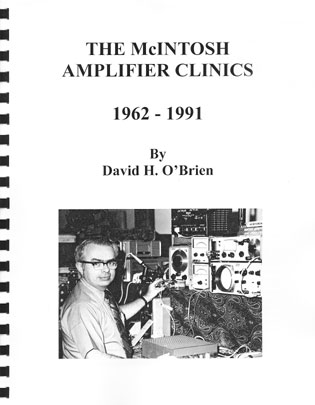Welcome to Dave O'Brien’s Page
and a Brief History of
McIntosh Clinics
by Roger Russell
These
pages are copyrighted
No portion of this site may be reproduced in whole or in part
without written permission of the author.
This
page is dedicated to the Memory of Dave O’Brien
(1928-2007)
I also
wrote a one-page memoriam about Dave that was published in the
Journal of the Audio Engineering Society Vol. 55, No. 4, April 2007, pg 319
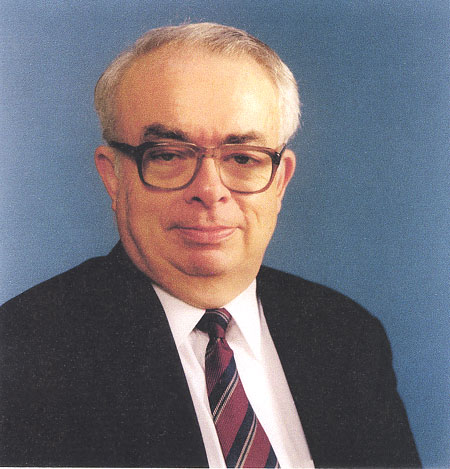
![]()
If McIntosh is remembered for anything, it's the famous amplifier clinics headed by Dave O'Brien. An amazing number of people still remember these clinics and Dave at the test bench. Not surprising--he did this for 29 years.
Dave has had an interest in audio for many years. He joined the Audio Engineering Society in 1949 and is now a lifetime member. He wrote an article titled "A Simple Preamplifier and Tone-Control Unit" that was published in Audio Engineering in November of 1951. He started the first exclusively Hi Fi component store in Columbus, Ohio with a partner, Ed Anderson. It opened in February 1954 and was called Anderson Hi Fi Center. The store was later sold and renamed Stereo Lab. He stayed in that business for 3 1/2 years before joining Bell Sound in Columbus. At his new job with Bell, Dave worked in the sales department, wrote manuals and was a consultant to the advertising manager. He also made some design improvements at his home lab. He left Bell in 1962 to join McIntosh.
Meanwhile, the first McIntosh Audio Clinic began at the New York High Fidelity Show in 1961. The first production run of the C20 preamp was having diode failure in the DC filament supply. As the first units were sold only in the New York city area, management decided to invite all McIntosh owners to bring in not only their preamplifiers but also their power amplifiers for a free evaluation. These units were restored to normal performance at no charge, including parts and tubes. This free audio clinic was a big success and was talked about by customers and dealers for many months.
I remember standing in line with a friend out on the sidewalk waiting to get into the show. The man in front of us was holding an MC30 under his arm. An MC30 weighs 30-1/2 lb. We wondered why he would be taking it into the show with him. It wasn't until later that we learned about a clinic at the McIntosh room.
After Dave was hired, management decided to hold a second Audio Clinic at the October 1962 Boston High Fidelity Show. This time McIntosh offered a free test for all brands of amplifiers and preamps. This was the beginning of the truth about the performance of other brands. It was not unusual to find the actual power output of an amplifier to be one half of what the advertising claimed. Distortion levels were often well off the graph paper which stopped at 7%. Graphs were actually extended into the area on the form where the names and addresses were located. Again, free tubes and parts were used to restore any McIntosh unit. Dave and Gordon Gow both performed the tests.
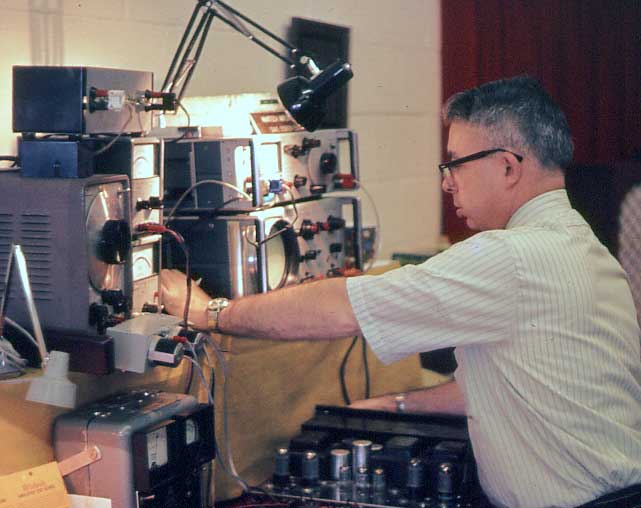
Here is Dave at a typical clinic setup
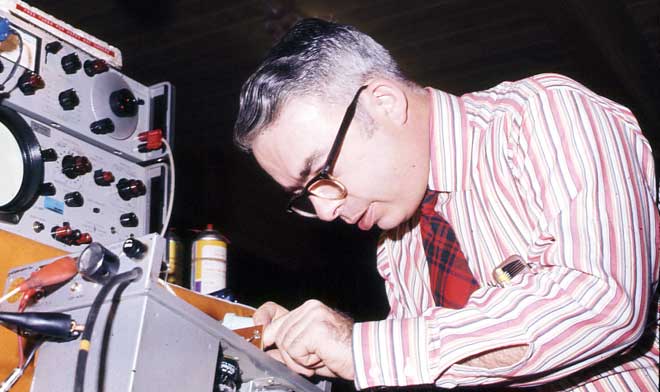
Doctor Dave doing some critical surgery
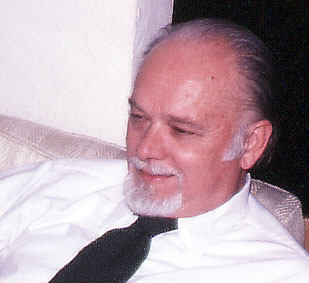 The New England McIntosh representative, Vol
Hetherington (right), made an important suggestion that changed the course of
the clinics. He thought; why not hold the clinic in one of our dealer's stores?
This would allow us to take advantage of the sales opportunities of bringing
potential customers into a store instead of a show. It worked.
The New England McIntosh representative, Vol
Hetherington (right), made an important suggestion that changed the course of
the clinics. He thought; why not hold the clinic in one of our dealer's stores?
This would allow us to take advantage of the sales opportunities of bringing
potential customers into a store instead of a show. It worked.
The first store clinic was in October 1962 at David Dean Smith in New Haven, CT. The test area was set up in the front window of the store. The test results were a revelation to the dealers as well as the customers. Few dealers had test equipment to do anything like this at the time. The sometimes-shocking performance of a customer's "brand-x" amplifier often led to instant sales of McIntosh equipment. The dealers loved it, and demand for McIntosh clinics skyrocketed. Attempts by other manufacturers to hold clinics were not successful. Perhaps it was because of the simple fact that their units did not meet their advertised specifications.
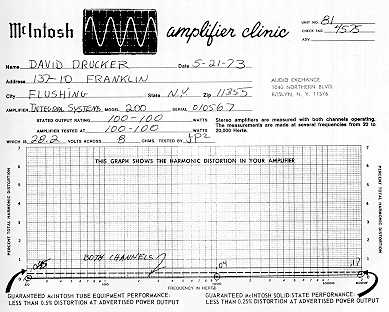
Typical clinic form
The clinics were also useful because they provided feedback to the factory on how the McIntosh equipment was holding up after being in service. Many engineering improvements were made as a result of this information. They also provided information about the competition. Dave knew more about the condition of other brands after they had been in use for a period of time than the original manufacturer. More than once Dave was approached by someone from another company asking what he had discovered about one or more of their particular models.
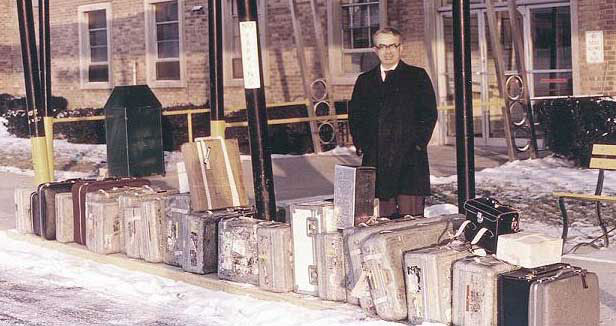
The clinic life was strenuous and there was no time for family life. There was a continuous challenge to not only arrive at a particular store on the scheduled day, but also to bring more than 600 pounds of test equipment and spare parts in 10 large specially constructed cases. Sometimes there was even more. Busy clinics required standing at the bench for many hours at a time. There were often 100 pieces a day coming into the store. Not only were units tested, but all the McIntosh units were restored to factory specs. Then it was off to another clinic to start over again.
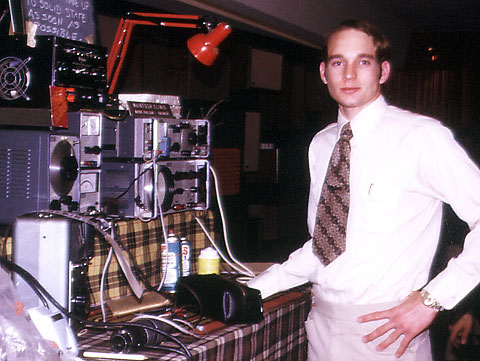 Clinic demand increased to the point where a second
person was needed. Wayne Paulson, a recent graduate of electrical engineering
at the University of Washington appeared at a Seattle clinic looking for a job. Dave hired him. During Wayne's 5th
year, Tom Howell, Jr. (pictured at left) was hired. Tom was the youngest son of
Tom Howell, Sr., a McIntosh dealer and owner of Howell electronics in El Paso, Texas. Wayne
and Tom each stayed for 5 years.
Clinic demand increased to the point where a second
person was needed. Wayne Paulson, a recent graduate of electrical engineering
at the University of Washington appeared at a Seattle clinic looking for a job. Dave hired him. During Wayne's 5th
year, Tom Howell, Jr. (pictured at left) was hired. Tom was the youngest son of
Tom Howell, Sr., a McIntosh dealer and owner of Howell electronics in El Paso, Texas. Wayne
and Tom each stayed for 5 years.
It often took two people and two sets of factory test equipment to evaluate all the units brought in. The all time record clinic turnout was 775 units at Pecar Electronics in Detroit. It was in November of 1972 and was conducted over a three-day period. There were three factory test setups and Pecar had two test benches of his own going.
Allen Pecar advertised his sales promotion events with a newsletter. He wrote and produced the newsletters himself, and even printed them on his own printing press in the back of his store. These newsletters were some of the finest and most effective of any Dave O'Brien has ever seen, and were a major reason for the record customer turnouts at Pecar's. Pecar newsletters included McIntosh product advertising that was original and very effective.
Gradually, competitive products of other manufacturers, particularly the Japanese, had improved to the point where measured performance at the clinics was as good, and sometimes better than the line of McIntosh products at that time. The clear performance superiority could no longer be demonstrated by the simple bench test. Although some brands tested well, it was obvious to Dave that the useful life span of many of them would be far shorter than McIntosh. The proof of reliability for McIntosh was in the 15 to 20 year old units that were brought in for testing. It was, and still is, common practice to pass McIntosh equipment on to the next generation.
Several new clinic rules were established. No dealer would accept a unit for testing before the actual scheduled clinic day. People were also required to stay in the store with their units at all times, especially for security reasons. In order for a unit to be tested, its owner had to be present at the clinic bench during the actual testing procedure. If any sales were to be made, this was the critical time to demonstrate and explain to a customer why they should consider buying McIntosh. The new policies immediately weeded out a substantial number of free loaders who were not really potential buyers, and were only interested in the free service.
In 1976, a major change was made in clinic policy. McIntosh tube units would no longer be restored to normal specifications. Tube manufacturers were closing down, and the quality of existing tubes did not meet the required specifications.
As McIntosh solid state products became more sophisticated and complex, they also became more reliable. However, more careful and deliberate attention was required to bring occasional units up to specifications while the customer waited. Dave changed the clinic format to just testing and evaluation. This allowed the dealer service department to make a profit as well as service customers.
As an experiment during the mid-80's, the clinic format was changed to be for McIntosh owners only. There were several complaints and no distinct advantage and after a few years, other brands were again tested. This time the "Spectral Fidelity" test was added. It demonstrated the advantage of the new Power Guard circuit that prevented the amplifier from causing distortion, even if it was overdriven.
The new test used two frequency generators and a spectrum analyzer. This was basically an intermodulation test and was similar to tests used in the development of the McIntosh speakers. Intermodulation distortion was selected because the distortion products are more discordant and unpleasant to listen to compared to harmonic distortion products.
Frequencies of 14kHz and 15kHz were selected. The generator outputs were adjusted for equal amplitude. The signals were mixed and fed to the power amplifier input. The amplifier output was set to rated power. The input level was then increased by 6dB. This test simulated the overdrive caused by music. The test demonstrated the advantage of the McIntosh Power Guard circuit. Distortion products remained very low with Power Guard. Any other amplifier showed copious amounts of distortion. The spectrum analysis was photographed for each amplifier and stapled to each clinic form.
Soon after introducing the spectral fidelity test, it became apparent that most consumers and dealer sales people had no idea what this test was all about. Dave tried to supplement the test with a demonstration using a few Telarc CD's that had 50 dB of dynamic range. [A 50-dB increase in level represents a power demand of 100,000 times.] The CD was played while watching the meters of a McIntosh power amplifier of at least 250 watts. If the normal level for the quiet passages were 1/2 watt, the power demand for the loudest level would be 50,000 watts, and of course was not available. Most amplifiers would produce lots of distortion, but McIntosh amplifiers with Power Guard would prevent being overdriven and not cause the unpleasant distortion.
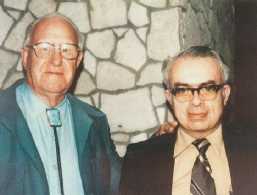 The last two years of the clinic program showed
changes in the stereo industry and lifestyles of the music listening public.
The precise measured numbers of how audio electronics performed was no longer a
priority with a majority of the public. Turnouts were steadily dropping to the
point that advertising was too costly for the number of people brought in. The
potential sales of new equipment strictly related to the clinic were mostly
gone. The clinic program was officially ended in December of 1991. The last
clinic was in early December at England Audio in Eugene Oregon.
The last two years of the clinic program showed
changes in the stereo industry and lifestyles of the music listening public.
The precise measured numbers of how audio electronics performed was no longer a
priority with a majority of the public. Turnouts were steadily dropping to the
point that advertising was too costly for the number of people brought in. The
potential sales of new equipment strictly related to the clinic were mostly
gone. The clinic program was officially ended in December of 1991. The last
clinic was in early December at England Audio in Eugene Oregon.
At the left is a photo of Dave and Mr. McIntosh. It was taken about 1985 at Mr. McIntosh's retirement home that he had built. It's on a steep hill overlooking Scottsdale, Arizona.
After the clinics ended Dave "stayed home" at the lab putting his experience to good use writing the new manuals and answering customer questions. On June 11, 1999 he retired after 38 years of service with McIntosh. Bravo, Dave!
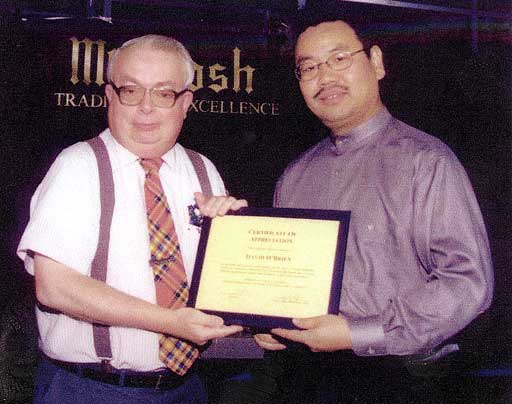
Dave
was presented with an award in appreciation for his contribution to McIntosh.
Presented by Mr. Masuda
Dave O’Brien passed away on January 9, 2007. He was born on May 3, 1928 in Worthington, Ohio. He was the son of Margaret K. and Harry R. O’Brien. He is survived by his brother Donald and nieces and nephews. He will be remembered by many people who met him at the McIntosh clinics where he tested more than a million amplifiers all over the United States over a span of 30 years. I will personally miss him both as a fellow employee and a friend.
![]()
Dave had time to write about his experiences at the clinics.
|
|
The McIntosh Amplifier Clinics 1962-1991
In 1962 McIntosh Laboratory Inc. started what was to become one of the most successful and longest running marketing campaigns in the Consumer Electronics industry, The McIntosh Amplifier Clinic.
McIntosh amplifiers were and are "Still the Best" but they had to find a way to prove it to the Consumer. They did this by testing amplifiers in stores; with Customers as witness they were able to show that McIntosh was the best.
David H. O’Brien may be the face and name most synonymous with McIntosh outside of Gordon Gow. He tested more than a million amplifiers all over the United States and Canada for nearly 30 years. Now, you can read the story of "The McIntosh Amplifier Clinics" written by Dave O’Brien, available exclusively thru Audio Classics for $19.95. |
![]()
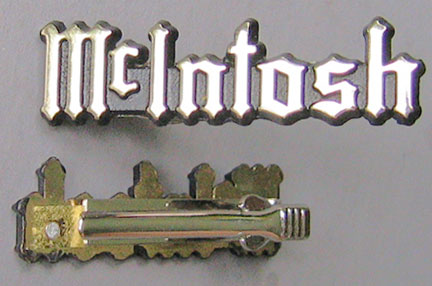
One of the popular memorabilia that Dave used to give away at clinics and other events was the McIntosh tie clip. He used to make them himself from a Mcintosh logo and a clip assembly. They were attached with epoxy and later with double-sided tape.
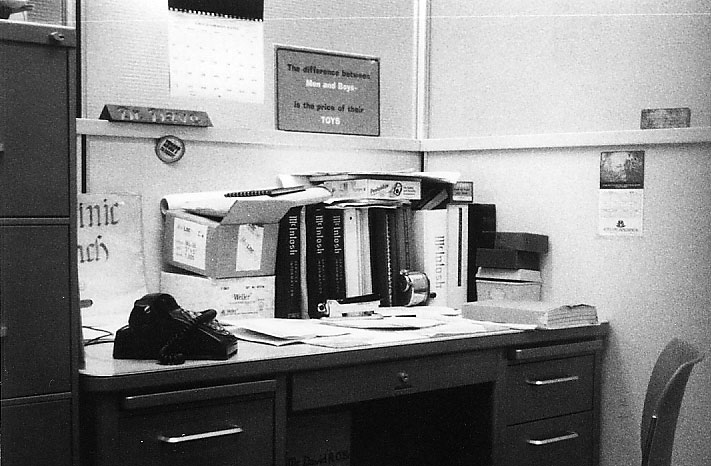
Dave had his own desk at work that he used when he was in town. The sign over his desk said:
The
Difference Between
Men and Boys
is the Price of Their
Toys
![]()
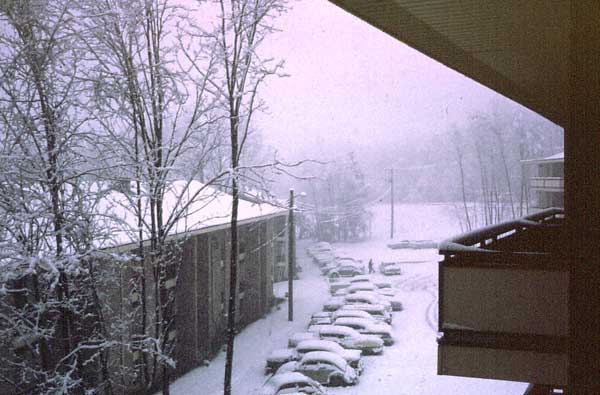
When Dave was first hired, he was lived in an apartment just off of the Vestal Highway. This is the view from his balcony in 1965.
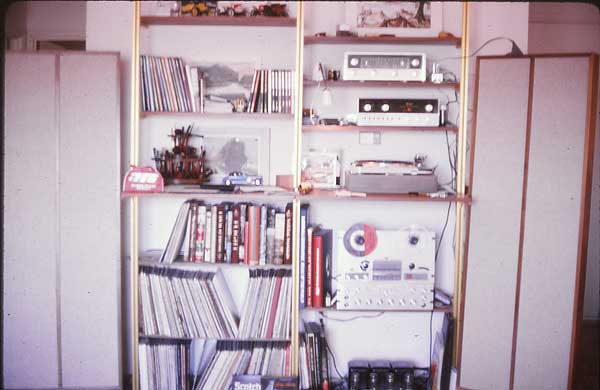
While living in the apartment, his early system consisted of records and tapes. It looks like an MC275 amplifier at the bottom, a Magnecord 1024 tape recorder that I later bought from him, a C24 preamp and an MR66 tuner. The screens on either side are KLH model 9 electrostatic speakers.
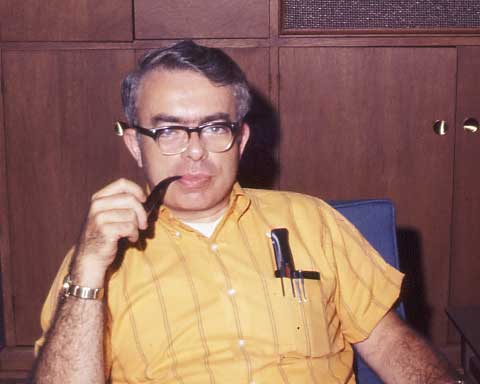
It was times like these that Dave could relax and enjoy his music collection. This picture was from 1970. I didn’t know that Dave had smoked a pipe back then. I had also smoked a pipe for a few years but had to give it up due to sinus problems.
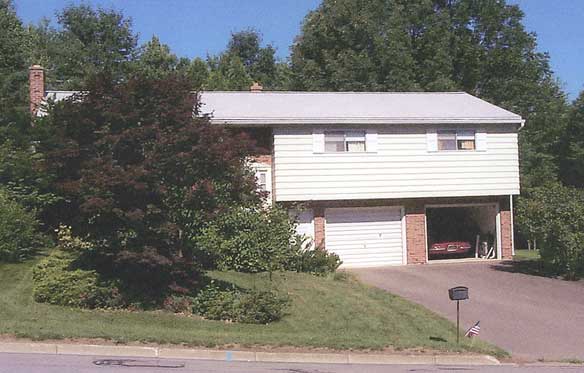
After his father had passed away, he purchased a house way up on a hill in Vestal, NY, where he lived comfortably. He also enjoyed the visiting wildlife such as birds and squirrels but not what he referred to as “thundering herds” of deer that came in the winter to browse on his shrubbery.
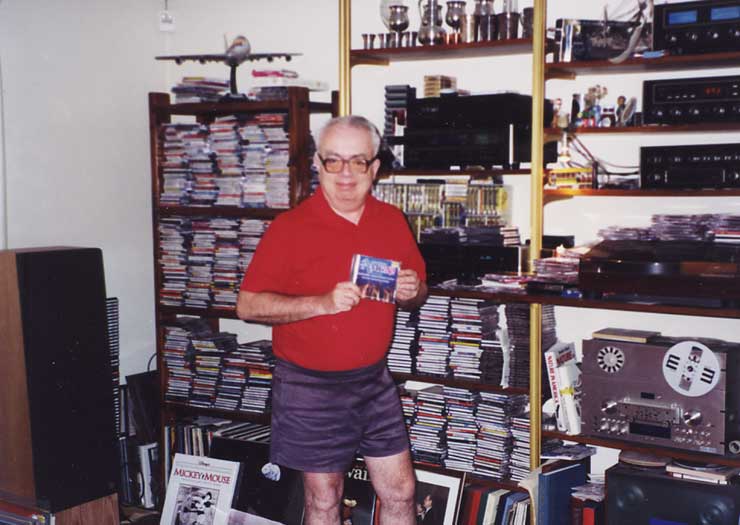
Dave was a great collector of music and books. Here is a picture of him and a portion of his living room taken in late 1993. His favorite speaker at the left was the McIntosh XR250. Besides his large collection of CDs, he also had many tapes and records. He was also a great fan of Disney and Mickey Mouse and had visited Disney Land and Disney World several times. He liked to use the latest cameras and took many pictures in his travels and around the lab. He enjoyed gourmet cooking. Dave always stopped by to visit at the speaker lab when he was not out doing clinics. He always brought the latest records or CDs to play and it was great to preview the new recordings.
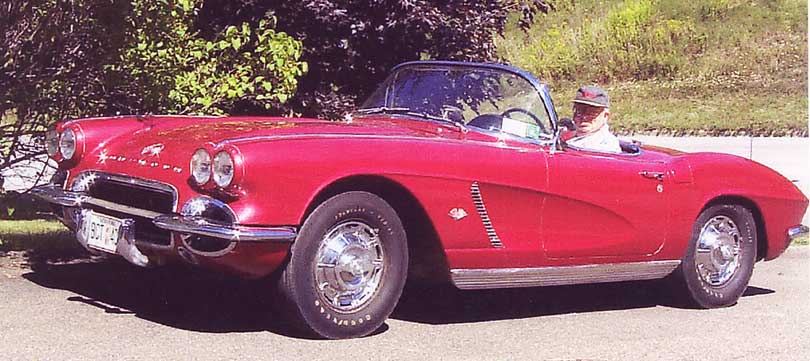
Here’s Dave in his favorite Corvette. He told me the spare tire still had the original air in it and the radio had the original tubes. He only took the car out in the summer when the weather was good. The rest of the time he used various Hondas over the years.
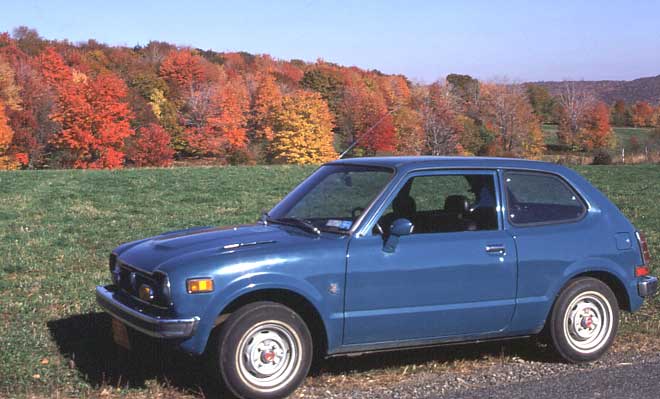
This was Dave’s Honda in October 1974. The picture was probably taken somewhere up in the hills in Vestal, NY. The fall foliage was always spectacular in the Binghamton area and was a nice contrast to the green open areas. He took many foliage pictures over the years.
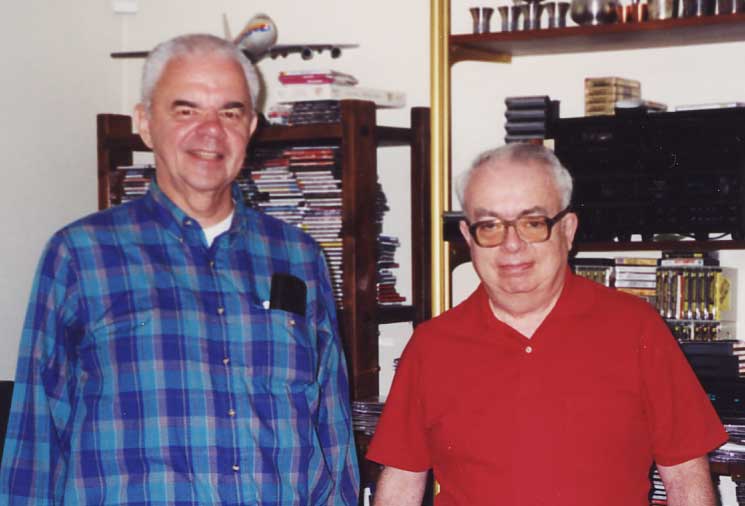
Here I am with Dave at his house. This was the last time I visited with him after my wife and I had moved to Florida.
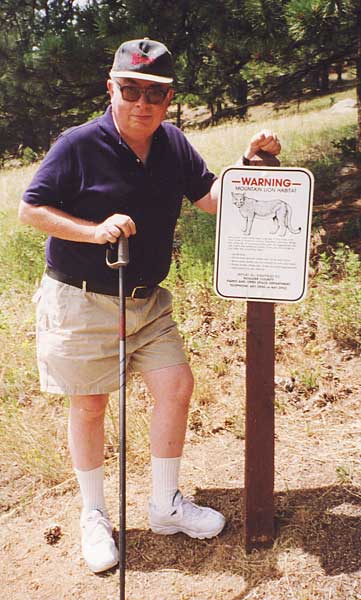
Dave had accumulated so many frequent flier miles in his travels that he was able to use them for trips to visit his nephews in Colorado and go “four wheelin” up in the mountains.
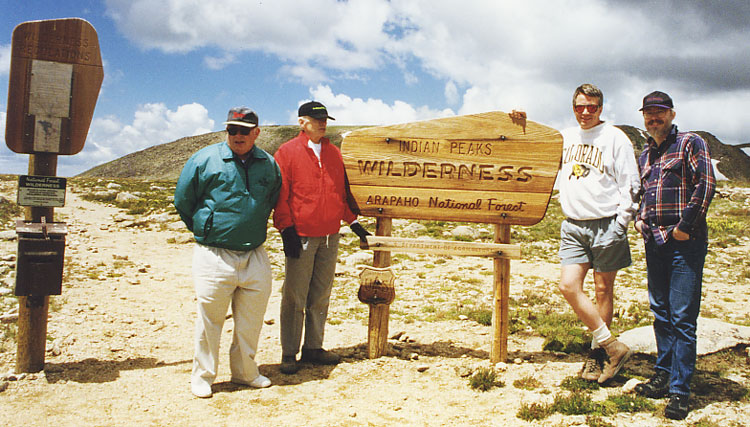
Left to right are Dave, Donald (brother), Dan (nephew) and Gary nephew. This was at Indian Peaks in the Arapaho National Forest, Colorado. The photo was taken in 1996.
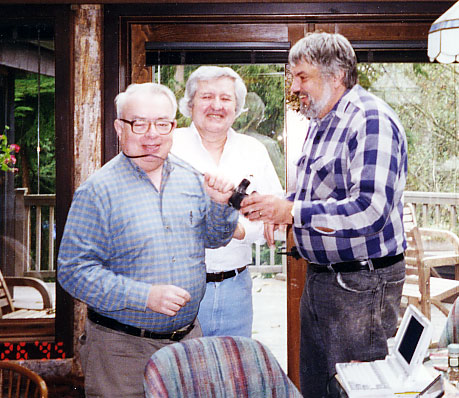
He also made many annual trips to visit his friends, the Van Meters, out in the state of Washington. He titled this picture as “Three Grumpy Old Men.” Left to right are Dave, Mila Nestorvic and AP Van Meter
![]()
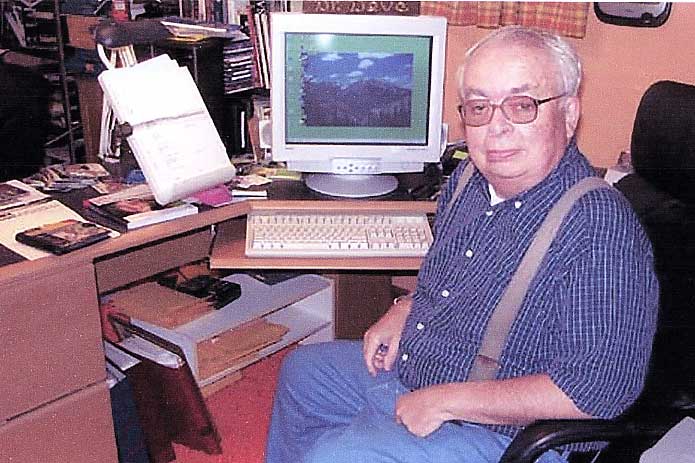
Dave never got into making his own web page so I kept one for him and included his email address and anything he wanted to have on it. After he retired, and got "on line" he received many emails from McIntosh customers who remembered him at the McIntosh clinics. They voiced appreciation for all the work that he did and for the generosity of the company in restoring their McIntosh equipment to like new condition at no charge. The letter that follows is reprinted with the permission of the writer and is typical of the many that he received.
Hello Mr. O'Brien
I well remember you at the clinics years ago. It was in about 1968 or so that I
answered an ad in the Atlanta paper for a Mac stereo amplifier. When I got to
the man's house it was evident that the amp was mono, this to his great
surprise. He was selling it for a speech school. It had no chrome McIntosh logo
on the front. I don't know if that was characteristic of early models or just
of commercial units. I bought it for about $25, hooked it up on getting home
and it sounded like shaking coarse dry sand in a brown paper bag, nothing more.
Then I learned about your clinic that was to be held in the stereo shop
adjacent to the Fox Theater.
I had not been to a clinic before, but took the amp to you. You did a quick test on it and said so that everyone could hear something to the effect that "This one is in sad shape". You turned it upside down, removed the bottom cover and proceeded to clip every single component out. You engaged in a little theatrics as you threw each item in the trash, again so that everyone could see. I was shocked, as were all the folks looking on who had brought their Scots, Bogens, etc. in for testing. You quickly replaced every item with a new component, and I think gave it a new set of tubes. Then you tested it again, and satisfied handed it back to me saying "Good as new, thanks for bringing it in." And when asked, you indicated there was no charge. Everyone around the bench was astonished, as was I, a very happy fellow. Probably a few new Macs were sold that day. I didn't buy one, but bought a few in later years, being excited and delighted with every one.
I still have the old MC30, even paired it up with a newer one with logo, but don't use them anymore. You must get hundreds of messages something like mine but I wanted to tell you that I really had a great day back then because of you and McIntosh and wanted to say thanks once more. With company backing you must have enjoyed being sort of a Santa Claus for folks. I hope you did. Too bad it had to end. I really hope you have found retirement satisfying, that it continues for a very long time and that you enjoy good health through it all.
Best regards,
Ronald G. Jones
March 30, 2001
![]()
After Dave passed away, I continued to receive tributes
1-16-2007
“While checking around on the internet, and of course your site, I just discovered that Dave O'Brien had passed away. The end of an era for certain, I remember Dave from the clinics at the Audio Center in Houston, TX from the late 1960's. I also remember Dave from the clinics in Hawaii around 1969, I also remember Dave from the clinics from Washington DC around 1972.....I remember Dave well. He was a showman for sure, and was driven by the customers and how they reacted to his antics of testing and repairing amplifiers. Dave could look at a unit and feel what was wrong, tubes, bias diodes, what ever, he made it look like magic all the while continuing his diatribe about the McIntosh low distortion and power output in excess of the rated power.
Dave exchanged many output tubes for me. I just wanted to thank you for your tribute to him, and to let you know that McIntosh equipment was a part of my childhood, my father owned everything Mc made, from an old 50 watt two chassis 6L6 amp to 2500's. The great part was that when he replaced / upgraded an amp or pre-amp....my system appreciated an upgrade also with his old stuff. I had an Mc30 and a C20 when I was in Jr. high school. Before that I had his C8 plugged into the Mc30. People such as yourself and Dave served as positive role models for my youth, integrity, professionalism, attention to detail, and a firm commitment to engineering principles, I do not see in engineers today. For that we owe you gentlemen a great debt.
Many years ( well ok a great many years) ago
I commented to my father, while making an enclosure for an EV 15TRX that it
would be my last
speaker enclosure, he remarked there was no such thing as a "last speaker
enclosure in my world". As it turns out, he was right about everything; he
was an electrical engineer, (Texas A&M) and an artist (Chicago Institute of
Art) and drug me through his interests in music and faithful music
reproduction. All made possible with McIntosh equipment. I will not attempt to
list all the McIntosh equipment I have in my home today, but at some point in
the future maybe I will so you will understand that the equipment you designed
is timeless, and lives on.
Dave was a part of my youth; I will always remember him, flipping the auto null switch on the HP 331a with great gusto. Thanks again for your web site, and remembering who I am certain was a dear friend to you, and moreover everyone and anyone who had the pleasure of meeting him. He did have an opinion, and shared it to all who would listen......”
![]()
Dave’s father was a freelance writer. He had a monthly column in Better Homes and Gardens for more than 30 years called The Diary of a Plain Dirt Gardener. His main income came from writing agricultural articles for Country Gentleman magazine, which was a farmer’s publication. He also contributed to other magazines from time to time. He also taught a course at OSU in technical journalism that continued for many years. His income was such that his family was not affected too much by the depression.
See some of Dave’s slide collection that he took over the years.
![]()
|
|
|
About This Site |
|
|
More text and pictures about McIntosh will be added as my research continues. Any comments, corrections, or additions are welcome. |
|
|
|
|
Created
by Roger Russell |
